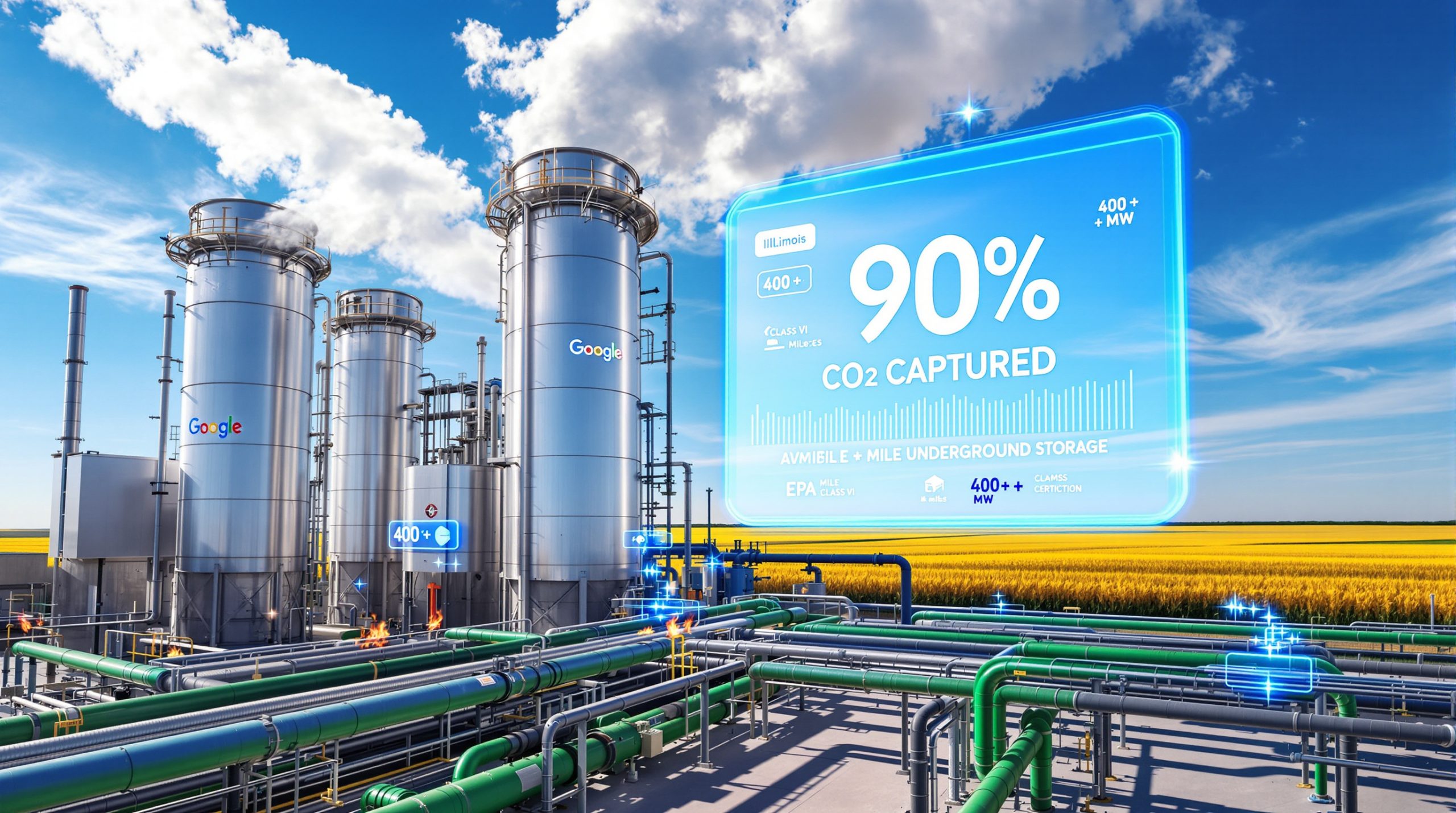Jiangxi Copper Corporation's Tellurium Tender: Market Implications and Industry Analysis
Jiangxi Copper Corporation's latest tellurium tender announcement represents a significant market development with far-reaching implications for global supply chains, solar manufacturing, and strategic metal procurement. This comprehensive analysis examines the tender details, market context, and strategic considerations for potential bidders and industry stakeholders.
What is the Latest Tellurium Tender from Jiangxi Copper Corporation?
Jiangxi Copper Corporation, one of China's premier copper producers, has announced a significant tellurium tender that's capturing attention across global metals markets. This offering represents an important opportunity for tellurium consumers to secure substantial quantities of this critical material directly from a primary producer.
Tender Announcement Details
The tender specifications reveal Jiangxi Copper is offering 5 metric tons of refined tellurium with an exceptional 99.99% purity level (grade Te9999). This high-grade material meets the exacting YS/T222-2010 technical standard, making it suitable for advanced applications in solar energy, electronics, and metallurgy.
The material will be packaged in wooden boxes, each containing approximately 500 kg of tellurium, designed to maintain product integrity during transportation and storage. This packaging approach reflects industry best practices for preventing contamination and oxidation of high-purity tellurium.
All deliveries will originate from the company's Guixi Smelter facility in Jiangxi Province, a strategically important production hub for refined tellurium in China. Interested parties should note the minimum purchase requirement of 2,000 kg, with additional quantities available in 500 kg increments.
For serious inquiries, Jiangxi Copper has designated Quanfu Zheng as the primary contact person. This direct channel to a procurement representative streamlines the communication process for qualified bidders.
Bidding Process Timeline
The tender follows a compressed timeline typical of Jiangxi Copper's efficient procurement protocols:
- Announcement date: June 24, 2025
- Submission deadline: June 27, 2025 (11:30 AM local time)
This three-day window requires potential bidders to move quickly to prepare their offers. Required documentation includes a business license copy, company invoicing information, and a completed inquiry form – all standard documentation for metals procurement in China.
All bid submissions must be sent via email to the designated Jiangxi Copper representative by the stated deadline. Late submissions typically receive no consideration, emphasizing the importance of timely preparation.
How Does the Payment Structure Work for This Tender?
Understanding the financial mechanics of this tellurium tender is crucial for potential bidders, as the terms significantly impact cash flow planning and risk assessment.
Financial Requirements
Jiangxi Copper Corporation's payment structure follows industry standards for bulk metal tenders while incorporating specific requirements that reflect the company's risk management approach:
-
Performance bond: Successful bidders must deposit 10% of the total cargo value within 2 working days of bid acceptance. This non-interest-bearing security deposit provides assurance to Jiangxi Copper while locking in the buyer's commitment.
-
Full payment timeline: The remaining balance (90%) must be remitted within 2 working days of contract signing, creating a compressed payment schedule that favors cash-rich buyers.
-
Payment method restrictions: Only bank telegraphic transfers are accepted, eliminating alternative payment methods like letters of credit that are common in international metals trading.
A notable aspect of this tender is the buyer's responsibility for all logistics. Purchasers must arrange and finance pickup and transportation from the Guixi facility, adding a significant cost component beyond the raw material price. For international buyers, this includes navigating China's export regulations for strategic metals – a process that requires specialized expertise.
Industry Insight: This payment structure shifts inventory risk to buyers but ensures seller liquidity, reflecting Jiangxi Copper's strong market position. Unlike Western tenders that often allow 30-45 day payment terms, Chinese producers typically demand rapid payment, reflecting different risk tolerance levels in global metals markets.
Why is This Tellurium Tender Significant for the Market?
The significance of this tender extends far beyond a simple transaction, representing broader trends in critical minerals strategy and technological development.
Strategic Importance of Jiangxi Copper
Jiangxi Copper Corporation occupies a commanding position in global tellurium markets through its copper refining operations. As one of China's largest integrated copper producers, the company recovers significant quantities of tellurium as a by-product of its core business.
The company's ~15% share of China's tellurium production (according to CRU Group estimates) translates to substantial market influence. With China controlling approximately 50% of global tellurium output (USGS, 2023), Jiangxi Copper's supply decisions create ripple effects throughout the entire value chain.
Historical patterns demonstrate that Jiangxi Copper's tender announcements often function as price signals to the broader market. The company's 2023 tender announcement preceded a 9% spike in global tellurium spot prices, highlighting its market-moving potential.
Tellurium Market Dynamics
Current tellurium spot prices hover around ¥1,100/kg (approximately $155/kg), representing a 17% increase from early 2025 levels. This price momentum reflects tightening market conditions as solar manufacturing capacity expands globally.
The supply-demand balance for tellurium remains precarious in 2025. Production constraints stem primarily from tellurium's status as a by-product metal – output is dictated by copper production rather than tellurium demand. This inelasticity creates vulnerability to supply shocks, particularly as industrial demand accelerates.
Regional price variations persist between China's domestic market and international prices, with premiums of 8-12% typically observed for exported material. This spread reflects China's dominant production position and the logistical/regulatory costs of moving material offshore.
Industry intelligence suggests commercial stockpiles remain below historical averages, with many end-users operating with just 2-3 months of inventory compared to the 4-6 months considered optimal. This inventory thinness amplifies the importance of major tender announcements like Jiangxi Copper Corporation and tellurium tender opportunities.
What Are the Industrial Applications Driving Tellurium Demand?
Understanding tellurium's end-use applications provides essential context for evaluating this tender's significance and forecasting future market conditions.
Renewable Energy Applications
The solar energy sector represents tellurium's fastest-growing and most significant demand segment. Cadmium telluride (CdTe) thin-film photovoltaic technology has emerged as a formidable competitor to traditional silicon solar panels, particularly in utility-scale installations.
CdTe solar technology offers several compelling advantages:
- Superior performance in high-temperature environments with less efficiency degradation than silicon
- Shorter energy payback time of approximately one year versus 1.5-2 years for silicon panels
- Lower manufacturing carbon footprint due to less energy-intensive production processes
- Competitive efficiency rates reaching 18-25% in commercial applications (NREL, 2024)
Market share data confirms CdTe's growing adoption, with the technology capturing approximately 5-7% of global solar installations in 2024-2025, up from 3-4% five years earlier. This growth trajectory appears sustainable, with industry forecasts projecting CdTe installations to grow at 12% annually through 2030 (SolarPower Europe, 2025).
Production forecasts from major manufacturers support this bullish outlook. First Solar, the world's largest CdTe producer, has announced plans to expand manufacturing capacity to 10 gigawatts by 2026 – a development that alone would require approximately 400 metric tons of tellurium annually.
Other Technical Applications
Beyond solar energy, tellurium serves diverse technical applications that provide stable baseline demand:
-
Metallurgical applications: Tellurium additions of 0.04% to steel and copper alloys dramatically improve machinability while maintaining structural integrity. This application accounts for approximately 30% of global tellurium consumption.
-
Electronics sector: Thermoelectric devices leverage tellurium's unique properties to convert heat differentials into electricity, with applications ranging from space probes to consumer cooling devices. Additionally, bismuth telluride formulations enable solid-state cooling without refrigerants.
-
Memory applications: Phase-change memory technologies incorporate tellurium alloys for next-generation storage systems with superior durability and speed. Intel's Optane memory technology utilizes tellurium-based materials for enterprise storage applications.
-
Defense and aerospace: Infrared detection systems rely on mercury cadmium telluride (HgCdTe) compounds for thermal imaging and targeting systems, creating a small but inelastic demand segment insensitive to price fluctuations.
Emerging research directions suggest tellurium applications may further diversify. Recent developments in quantum dot technology, thermoelectric efficiency, and phase-change materials point to expanding applications that could drive additional demand growth beyond current forecasts.
How Does This Tender Impact Global Tellurium Supply Chains?
Analyzing this tender's implications requires understanding the complex global tellurium supply network and its inherent vulnerabilities.
Supply Concentration Analysis
Global tellurium production exhibits significant geographic concentration, with China accounting for approximately 50% of world output (USGS, 2023). Other significant producers include Sweden, Japan, Russia, and Canada, though their combined production remains below China's total.
The production methodology for tellurium further concentrates supply risk. Approximately 90% of global tellurium is recovered as a by-product of copper refining (CRU Group, 2024), with the remainder coming from lead and gold processing. This dependency on primary metal production means tellurium supply responds primarily to copper economics rather than tellurium demand signals.
Within this already concentrated landscape, corporate production is similarly consolidated. Five companies control approximately 65% of global copper supply forecast, with Jiangxi Copper representing a significant share within China's domestic production.
China's position within global tellurium markets involves complex trade dynamics. While producing half the world's supply, China also consumes a majority share through its dominant solar manufacturing sector. The country's net export position has declined in recent years as domestic consumption has increased, creating potential supply challenges for international consumers.
Supply Risk Factors
Several factors create potential vulnerabilities in tellurium supply chains:
-
Extraction challenges: Tellurium recovery from copper anode slimes presents technical complexities, with typical extraction rates of only 0.1kg tellurium per ton of copper anode slime (JOM Journal, 2023). This low concentration makes dedicated tellurium production economically unfeasible.
-
Dependency on copper production: Global copper refineries operate based on copper economics, with tellurium recovery as a secondary consideration. When copper production decreases, tellurium output falls proportionally, regardless of tellurium demand.
-
Geopolitical considerations: China's evolving export policies for strategic metals create regulatory uncertainty. While tellurium has not faced export restrictions to date, its classification as a strategic material creates potential supply risk for international buyers.
-
Substitution potential: Research into alternative materials threatens long-term tellurium demand in some applications. Silicon-perovskite tandem solar cells offer a potential alternative to CdTe technology, though commercial viability remains several years away. For metallurgical applications, selenium and bismuth can serve as partial substitutes with performance tradeoffs.
Market Insight: The 2022 tellurium shortage demonstrated supply chain vulnerability when U.S. solar manufacturers faced production delays due to material scarcity. Several manufacturers were forced to idle production lines for 2-3 weeks while securing alternative supply sources, highlighting the risks of just-in-time inventory strategies for critical minerals.
What Should Potential Bidders Consider?
For organizations contemplating participation in this tender, several strategic considerations should inform decision-making and bid preparation.
Strategic Bidding Considerations
Developing an effective bid strategy requires careful market analysis and internal assessment:
-
Price benchmarking: Current spot prices of approximately ¥1,100/kg provide a reference point, but historical tender results suggest Jiangxi Copper's large-volume tenders may transact at 3-5% below spot levels due to quantity considerations.
-
Volume assessment: The 2,000 kg minimum purchase represents a substantial commitment. Bidders should evaluate consumption rates and inventory carrying costs against potential volume-based pricing advantages.
-
Logistics planning: Transportation costs from Guixi to domestic destinations average ¥50/kg, with substantially higher costs for international destinations. These expenses, plus any export duties or processing fees, must be incorporated into total acquisition cost calculations.
-
Documentation preparation: Chinese metals tenders require complete and precise documentation. Missing or incorrect information frequently results in bid disqualification, necessitating meticulous preparation.
For international bidders, additional factors include currency exchange risk, regulatory compliance requirements for importing strategic metals, and potential tariff considerations based on country of destination.
Post-Acquisition Strategies
Securing material through this tender represents only the first step in effective tellurium management:
-
Inventory management: Tellurium requires specific storage conditions to prevent oxidation. The material oxidizes at temperatures above 40°C and should be stored in climate-controlled facilities away from moisture and contaminants. Improper storage can result in quality degradation and value loss.
-
Downstream integration: Organizations with internal processing capabilities may achieve cost advantages by converting raw tellurium into application-specific forms such as CdTe powder for solar applications or tellurium dioxide for catalytic processes.
-
Market timing: Given tellurium's price volatility, strategic inventory management can create opportunities for value creation. During the 2024 price spike, traders with inventory positions realized margins exceeding 25% through strategic selling during supply constraints.
-
Hedging considerations: Unlike major metals, tellurium lacks liquid futures markets for direct hedging. Companies can develop synthetic hedging strategies using copper price insights (given the production correlation) or implement longer-term fixed-price contracts with end users to manage price risk.
FAQ: Tellurium Market and Jiangxi Copper Tenders
What is tellurium primarily used for in 2025?
Tellurium applications in 2025 break down approximately as follows:
- 40% – Solar energy (primarily CdTe thin-film photovoltaics)
- 30% – Metallurgical additives (steel and copper alloys)
- 20% – Electronics and thermoelectric devices
- 10% – Other applications (including rubber processing, glass manufacturing, and research)
The renewable energy sector represents the fastest-growing segment, with annual growth exceeding 12% as CdTe solar technology gains market share in utility-scale installations.
How is tellurium typically produced?
Tellurium production occurs almost exclusively as a by-product of other metal refining processes:
- 90% is recovered from copper refining anode slimes
- 5% comes from lead refining operations
- 5% is derived from gold, bismuth, and other metal processing
The element is extracted through a complex process involving oxidation, leaching, and reduction steps. Copper producers like Jiangxi Copper represent the primary source because their electrolytic refining processes naturally concentrate tellurium in anode slimes.
What factors influence tellurium pricing?
Tellurium prices are affected by multiple interconnected factors:
- Copper production volumes: As a by-product, tellurium supply correlates directly with copper refining activity
- Solar manufacturing demand: CdTe production capacity expansions create step-changes in demand
- Inventory levels: Limited commercial stockpiles mean small supply-demand imbalances cause significant price movements
- Technological developments: Research into alternative materials or improved recovery methods can impact long-term price trends
- Supply chain disruptions: Political, logistical, or production interruptions cause outsized price effects due to limited supply elasticity
The limited spot market liquidity (estimated at just 15-20 metric tons monthly) means relatively small transactions can create significant price volatility during supply-demand imbalances.
How does Jiangxi Copper's tender process compare to market alternatives?
The tender process offers distinct characteristics compared to alternative procurement methods:
- Transparency: Tenders provide clear price discovery but offer limited negotiation flexibility
- Volume advantage: Large-volume tenders typically price 3-5% below spot levels for equivalent quality
- Payment terms: Tender terms require rapid payment versus negotiated contracts that may offer extended terms
- Quality assurance: Direct producer sourcing reduces quality variation risk compared to trader-sourced material
- Relationship value: Successful tender participation can establish buyer-seller relationships leading to future purchasing advantages
Alternative procurement methods include direct negotiated contracts (offering flexible terms but requiring established relationships), spot market purchases (providing immediate availability but at premium prices), and long-term supply agreements (offering price stability but reducing flexibility).
Market Outlook for Tellurium in 2025-2026
Analyzing current market conditions and development trajectories provides insight into potential tellurium market evolution over the coming 12-24 months.
Price Forecast Scenarios
The tellurium market faces several competing forces that will shape price development:
Bullish factors supporting price strength:
- Expanding solar manufacturing capacity: Each gigawatt of new CdTe
Ready to Gain Early Access to Major ASX Discovery Announcements?
Discover how Discovery Alert's proprietary Discovery IQ model instantly analyses ASX mineral discoveries, delivering immediate insights on potential investment opportunities before the broader market. Begin your 30-day free trial today to gain a market-leading advantage in ASX resources investing.




